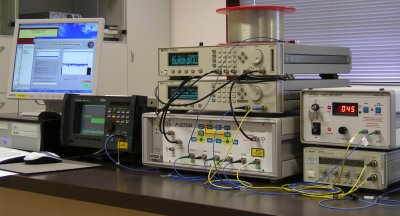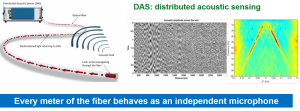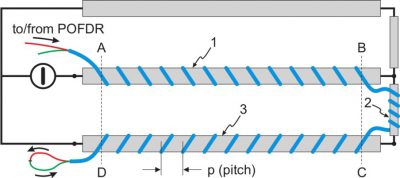OPTICAL FIBER SENSING
Distributed measurements in optical fibers
Distributed measurements are powerful tools able to provide the local properties of an optical fiber by analyzing the light backscattered by the fiber itself. PEG has a great expertise in distributed polarization measurements, which are based on the polarization analysis of the Rayleigh backscattered light. The Group has contributed to this area of research developing an accurate model of round-trip propagation, effective inverse-scattering algorithms to retrieve local information from the backscattered light, and verifying those theoretical results with an extensive and varied experimental activity.
Distributed measurements of different polarization effects, such as:
- Faraday rotation,
- bending, twist, spin,
- polarization mode dispersion
- polarization dependent loss
have been successfully demonstrated. Presently, PEG is working toward extending those methods to the analysis of mode-coupling in few-mode fibers.

Optical fiber sensors
In the last years PEG has started being involved in the filed of optical fiber sensors. Its main focus are Rayleigh-based distributed sensors, in particular for two main applications: river bank surveillance and current/magnetic fields measurements.
Riverbank collapse processes are often related to variations in the seepage flow. OFSs allow continuous and distributed control of the physical parameters that describe local stability of a riverbank. Currently PEG is collaborating with a team of geologists and hydrologic engineers to test distributed temperature sensors and to develop OFSs for pressure monitoring.
Magnetic fields can be measured with optical fiber by exploiting Faraday rotation of polarization. This is very well known since the early 80’s and nowadays optical fiber current sensors are commercial products. PEG has recently pushed further the field by developing the first distributed optical fiber sensor for magnetic field measurement. The sensor is based on the polarization analysis of the light generated by Rayleigh backscattering, and exploits an original and effective inverse-scattering algorithm developed by PEG. As a result, the sensor can be used to build vectorial maps of intense magnetic fields in the area spanned by the fiber. More recently, the same concepts are being applied to the distributed measurement of electric current.


